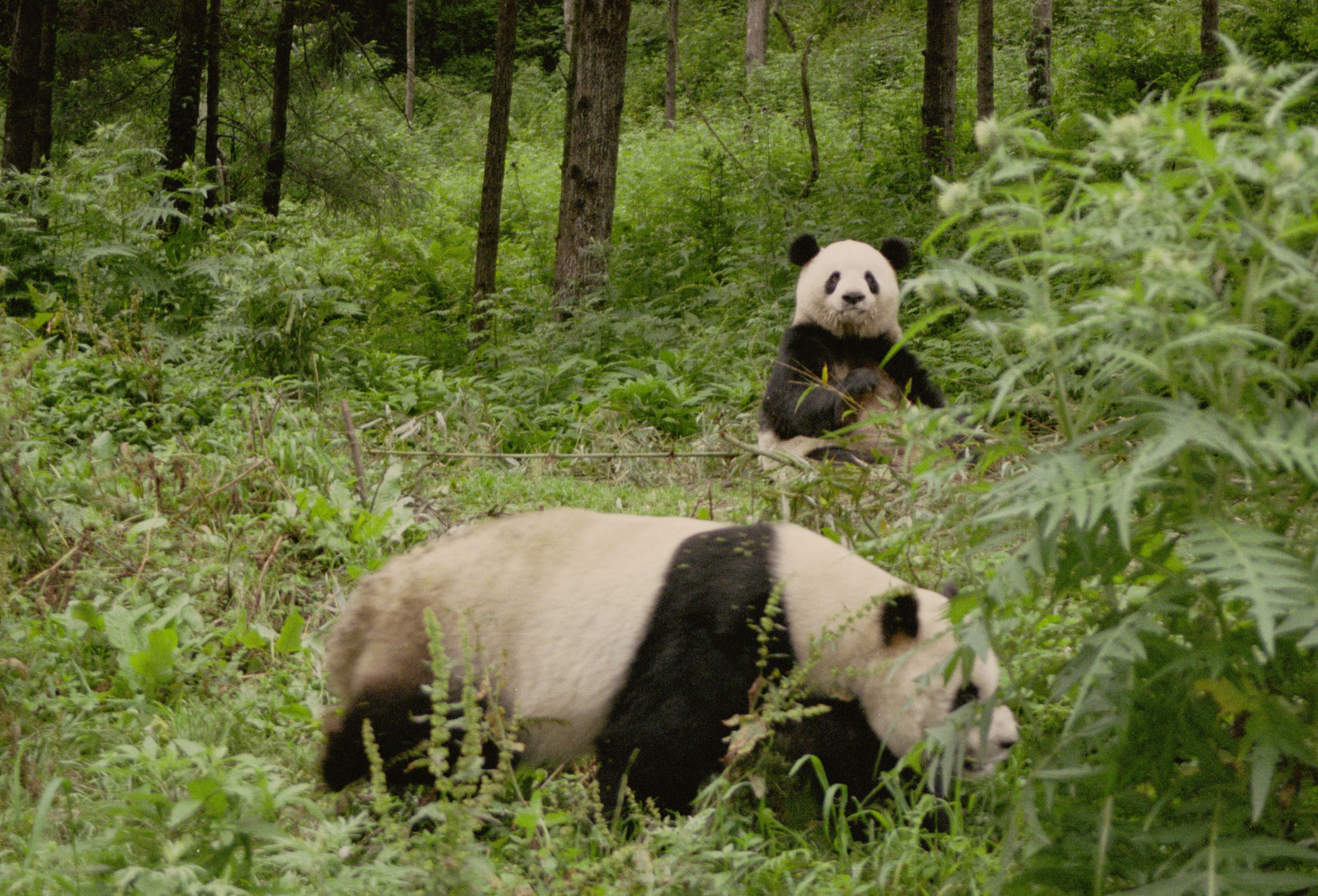Southwestern China’s Wolong Nature Reserve has been the center’s “excellent laboratory” where the international and interdisciplinary team lead by international sustainability scholar Jianguo “Jack” Liu has continuously conducted research for more than two decades.
Liu and colleagues around the world have examined how people and the environment interact -- from the rural mountains of Wolong National Nature Reserve in the Sichuan Province of southwestern China to 141 countries.
 Bear or raccoon?
Bear or raccoon?
There has been some 100 years of controversy about whether giant pandas are related to bears or raccoons. Genetic testing weighed in, and, indeed, they are bears.
Diet
Panda’s diet is 99 percent bamboo – its most readily available food source. But bamboo isn’t highly nutritious, so they need to eat a lot of it – some 20 to 30 pounds a day.
Panda factoids
- Adult pandas are between 5 ½ to 6 feet long and weigh more than 200 pounds
- Pictures you may see of people playing with pandas are supervised encounters with young pandas – usually around four months old – who have been raised to be people friendly. Adult pandas may be cute, but they are wild animals. With teeth. And claws.
- Because pandas chew tough bamboo, they have highly developed muscles in their jaw and large crushing
 molars. This gives a panda’s head its round appearance.
molars. This gives a panda’s head its round appearance. - They don’t hibernate. Their diet doesn’t allow them to build up the fat reserves that other bears use to sleep all winter.
Panda calling cards
Pandas are elusive and shy so it’s rare to see them in the wild. Absent an animal, researchers get really good at spotting signs of pandas.
A big sign is poop. Poop tells where pandas have been and recently has been a wealth of information. Scientists can glean DNA from fresh droppings which can discern individual characteristics of pandas. That has shown that there are more pandas in than conventional counting shows.
Reintroduction
Researchers from Michigan State University's Center for Systems Integration and Sustainability have been involved in China’s efforts to reintroduce pandas into the wild. Thanks to successful captive breeding programs, the China Center for Research and Conservation of the Giant Panda in the Wolong National Nature Reserve in 2003 launched a reintroduction program.
And that’s where habitat comes in. It doesn’t make sense to release precious pandas until it’s known what kind of habitat they want and need.
The China center has been working to release captive-raised adult pandas by starting them out in large enclosed areas – first 27,000 square meters, then 120,000 square meters – to monitor how they do in areas that approximate the wild. The study shows scientists how this enclosed method works, how pandas are doing in wild-like environments and what they seem to need from their habitat.
The work underscores how crucial the panda team’s work is to panda survival.



 Print
Print Email
Email